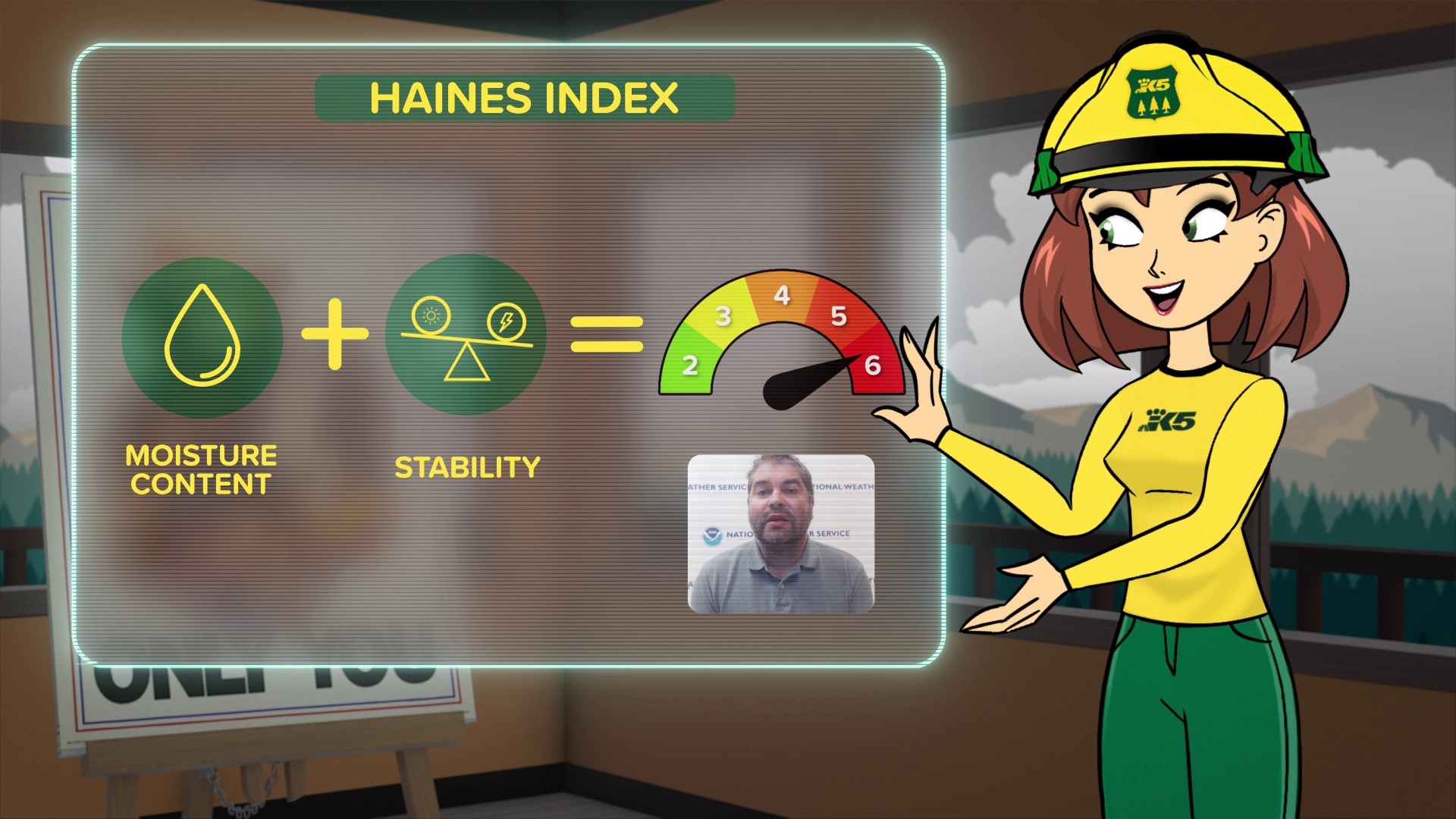SEATTLE — Similar to metric scales used to measure weather events like tornadoes and hurricanes, meteorologists also have a scale used to measure wildfire risk.
The Haines Index is a common metric used in the northwest portions of the United States. It’s a numeric output that measures wetness and stability components.
“The Haines Index itself is derived from two terms," said Seattle-based National Weather Service forecaster Steve Reedy. "It has a wetness component, so that would be relative humidity values at different layers of the atmosphere. Then it has a stability component. How quickly air is moving upward in different layers of the atmosphere?”
He said those two components are given a ranking, one through three. Then, added together, they create a final ranking of two through six.
In terms of relative humidity, one is the lowest, meaning the air is fairly moist and three is the highest, meaning the air is very dry.
In terms of stability, one is stable, meaning it’s a fair-weather day and three is very unstable, meaning there are storms brewing. Instability is dangerous for fire risk because that means thunderstorms can be present and lightning can strike.
If the Haines Index is in the five to six range, that means there is dry, unstable air and an increased risk for wildfire.
“The Haines Index in its formation is complicated but part of the reason it is the way it is is so that it can break down this complex information in a really digestible way,” said Reedy.
According to the 2022 Northwest Annual Fire Report, the 2022 fire season observed nearly twice the number of human-caused fires compared with lightning-caused fires, whereas lightning-caused acres burned nearly three times the amount that of human-caused acres.
According to the 2022 statistics, in Washington, Oregon and Idaho, there were 2,295 human-caused fires and 163,581 acres burned from those fires. Those three states saw 1,226 lightning-caused fires and 467,981 acres burned from those fires. This shows that even though fewer fires start from lightning, those naturally-caused fires can be more impactful.
However, Reedy said everyone should be cautious on these high-ranking days, and the Haines Index is a way of putting into perspective just how high the fire risk is on a given day.
“Having the general public aware of this metric can certainly be used as a fantastic tool to heighten people’s awareness," he said. "To consider, OK, maybe I should be a little more fire-wise today. Maybe not start that campfire.”

